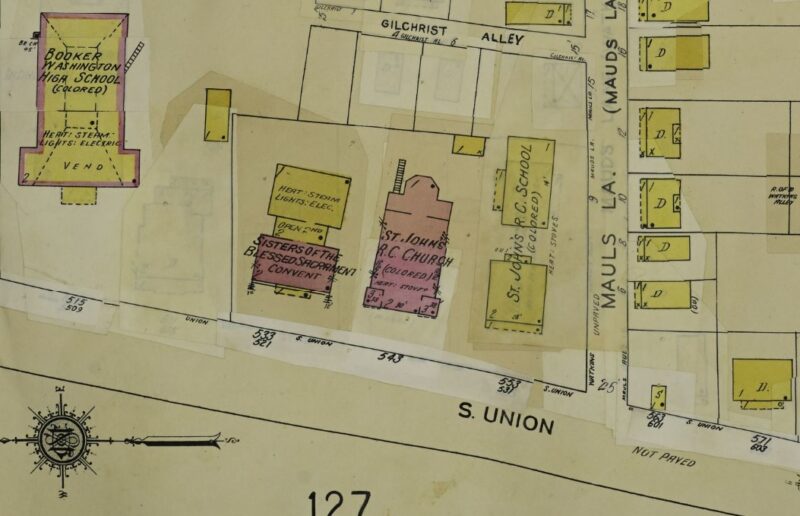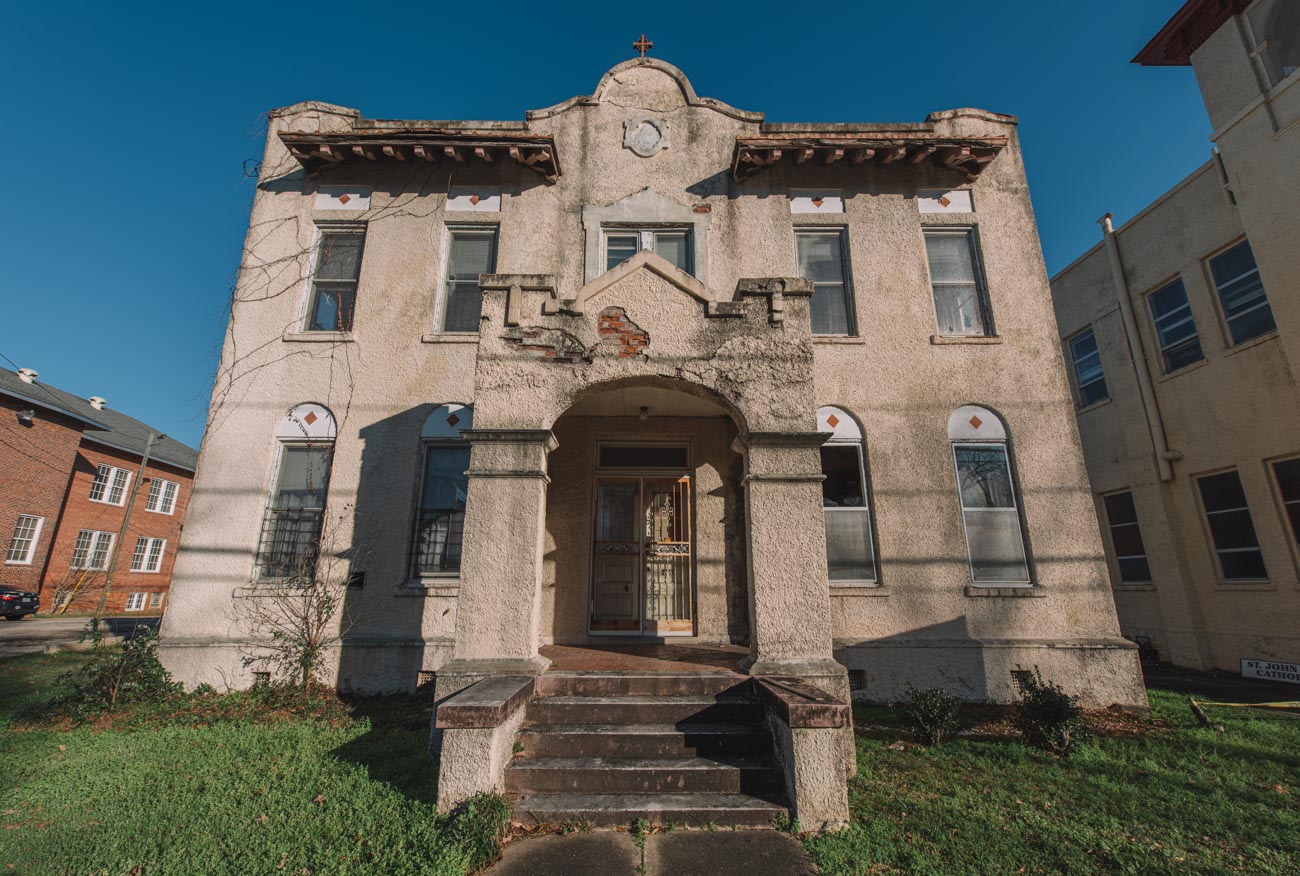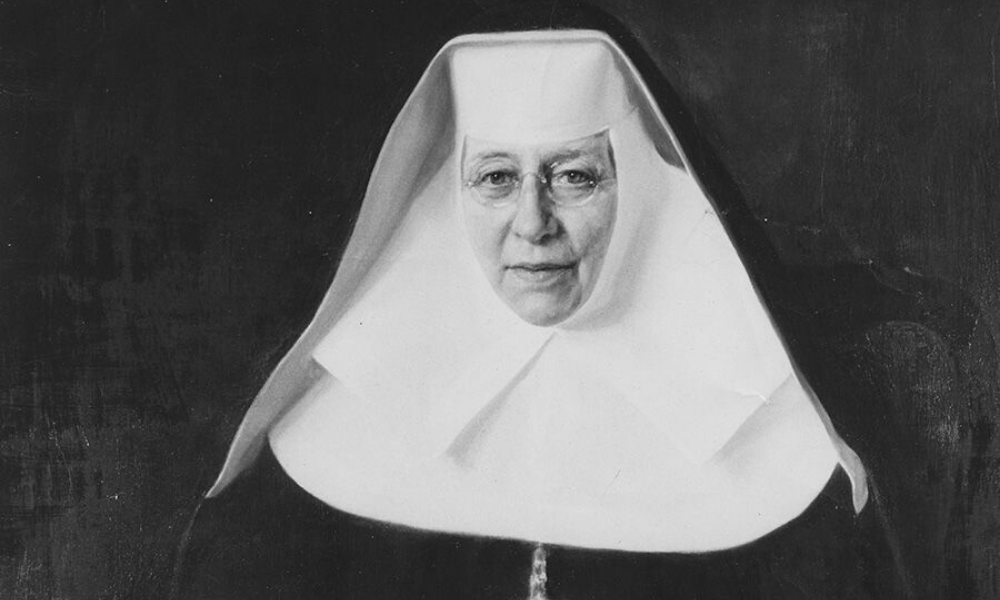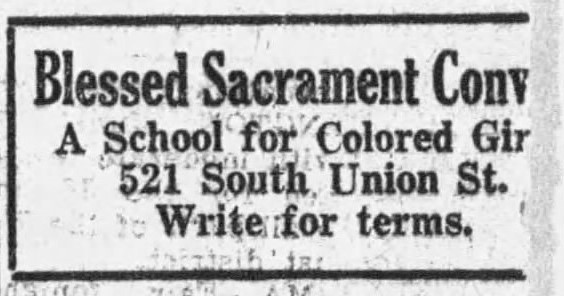| City/Town: • Montgomery |
| Location Class: • Religious |
| Built: • 1913 | Abandoned: • N/A |
| Status: • Abandoned • Gutted |
| Photojournalist: • David Bulit |
Table of Contents
Centennial Hill
St. John the Baptist Catholic Church and Convent for the Sisters of the Blessed Sacrament are located in Montgomery in the historic Centennial Hill neighborhood. The church was one of many built within the community in the early part of the 20th century. Centennial Hill grew around the historic First Congregational Church which was established by the American Missionary Association (AMA) on October 6, 1872, by Pastor George Whitfield Andrews.
In 1867, the AMA and the Freedmen’s Bureau, headed by General Wager Swayne, opened Swayne Primary School, Montgomery’s first school for black children. The Lincoln School of Marion was established that same year by nine ex-slaves and taken over by the AMA in 1868. After a large fire destroyed most of the campus, the university was relocated to Montgomery where it eventually became Alabama State University.
The area gained prominence as the civic, religious, educational, business, and residential center for black notables such as businessman Victor Hugo Tulane who constructed the Victorian style ‘Tulane Building’ corner grocery store just northeast of St. John the Baptist Catholic Church; Dr. Cornelius Dorsette, the city’s first black physician and the first licensed black physician in Alabama; Nat King Cole who was born and raised in Centennial Hill; Rufus “Tee Tot” Payne, a blues musician and Hank Williams’ mentor, lived in the neighborhood; and Martin Luther King Jr., a minister, and leader of the civil rights movements who lived at 309 South Jackson Street.
Reverend Daniel J. Rice, S.S.J.
Reverend Daniel J. Rice was born June 15, 1878, in Glasgow, Scotland, and was brought to America by his parents at 2 years old. He attended parochial schools in Philadelphia, Pennsylvania before attending the Epiphany Apostolic College and St. Joseph’s Seminary in Baltimore, Maryland. He was ordained on December 21, 1907, in the Baltimore Basilica, the first Roman Catholic cathedral built in the United States.
He served in Montgomery until 1918 when he was appointed pastor of the Most Pure Heart of Mary in Mobile. He remained in Mobile until 1924 when he was appointed pastor of the newly founded Church of the Good Shepard for Colored Catholics in Washington D.C., a congregation that was later transferred to St. Vincent de Paul’s Church. In 1931, he was appointed pastor of St. Peter Claver Church in Baltimore followed by St. Pius’ Church six years later. Father Rice died on May 31, 1940. At the time of his death, he was recognized as a senior consultor and vicar general of the Society of St. Joseph.
After his ordination, Father Rice was immediately assigned to work among the African-Americans in Montgomery where he built the St. John the Baptist Catholic Church on South Union Street. Work began on the church in 1912 and upon its completion, it was blessed and dedicated by Bishop Edward P. Allen on May 3, 1914. Father Rice appealed to Katharine Drexel of the Sisters of the Blessed Sacrament to staff the school. His request was granted and on August 31, 1917, two Blessed Sacrament Sisters arrived in Montgomery to begin the work of establishing and operating a parish school.

Sisters of the Blessed Sacrament
Founded in 1891 by Saint Katharine Drexel as the Sisters of the Blessed Sacrament for Indians and Colored People, an order of missionary nuns dedicated to the welfare of American Indians and African Americans. Born Catherine Mary Drexel on November 26, 1858, she was the daughter of banker Francis Anthony Drexel and his wife Hannah Langstroth. She became interested in the plight of Native Americans after reading Helen Hunt Jackson’s A Century of Dishonor. In 1884, her family traveled to the Western states where she got to experience the plight and poverty of Native Americans firsthand.
Her father left behind a massive estate after his death in February 1885 of $15.5 million which was to be divided up among his three daughters and specific charitable donations. According to his will, rather than his daughters receiving a lump sum of money, they instead controlled income for the estate. The will also stipulated that if there were no grandchildren upon his daughters’ deaths, the estate would be distributed among several religious orders that were listed in the will. With money on hand, Katharine and her sisters contributed money to help the St. Francis Mission on South Dakota’s Rosebud Reservation.
In January 1887, they privately met with Pope Leo XIII to request for missionaries to staff some Native American missions that they had been financing. In that meeting, he suggested that Katharine become a missionary herself. Shocking the nation and high societies, Katharine did just that and professed her first vows as a religious sister on February 12, 1891, dedicating herself to work among the Native Americans and African Americans in the western and southwestern United States. She took the name Mother Katharine and soon established the Sisters of the Blessed Sacrament along with thirteen other women.
Missionary Work
In 1892, Katharine built the St. Elizabeth’s Convent in Cornwell Heights, Pennsylvania, for the new religious order. Requests for help and advice reached Mother Katharine from various parts of the United States. The order’s first significant contribution was the establishment of a boarding school, St. Catherine’s Indian School, in Santa Fe, New Mexico. Drexel also helped finance the friars of St. John the Baptist Province of the Order of Friars Minor in Cincinnati, Ohio, and their work with the Pueblo and Navajo Native Americans in New Mexico.
In later years, the Sisters were a notable collaborator with the NAACP, funding its investigation of the Mississippi Delta Levee Camps in 1932, and supporting their anti-lynching campaigns. In her life, Drexel established 145 missions, 50 schools for African Americans, and 12 schools for Native Americans including the Xavier University of Louisiana, the only historically black Catholic college in the United States.
Mother Katharine Drexel died at the age of 97, on March 3, 1955. Drexel left behind no children and per her father’s will, the income she received from her father’s estate was instead distributed among her father’s list of recipients. As the Sisters of the Blessed Sacrament was founded after her father’s death, they weren’t on the list and in turn, lost their stream of income. Drexel was canonized as a saint in 2000, one of only a few U.S.-born saints and the first natural-born U.S. citizen saints. By 2018, there were about 100 Sisters of the Blessed Sacrament, more than half of whom were retired.
Blessed Sacrament Convent
The school established in Montgomery was known as the Blessed Sacrament Convent, serving kindergarten through eighth grades for the African American children of the city. Soon after its establishment, Father Rice left Montgomery having been appointed pastor of the Most Pure Heart of Mary, an African-American church in Mobile. He was succeeded by Father Micheal J. Gumbleton. The property was expanded in 1923 when the church purchased adjacent land from J. W. Kelly for $1,000 to be used as a playground for the growing school. Despite a lack of capital for any substantial improvements, St. John’s was able to open a much-needed high school in 1933 for the African-American population.
Relief came a few years later with the arrival of Father Harold Parcell and his dream to create a “center for the religious, charitable, educational and industrial advancement of the Negro people.” That dream took shape as work began on the City of St. Jude in 1938, starting with the construction of the City of St. Jude Church. The church building had classrooms in the basement, but Purcell was not satisfied with the facilities, and in 1940 he began to construct a school for local African Americans. Construction was interrupted by World War II but resumed in 1946.
When completed, the school building consisted of 32 classrooms and staff rooms with facilities for at least 600 students. The St. Jude High School welcomed its first students in 1947. The building had enough room for all of St. John’s high school students, so to relieve the financial burdens of the parish, St. John’s closed its high school. Without the pressures of operating two schools, the church could improve its elementary school program. Facility studies revealed problems that only a new facility could solve. In 1962, a new school building was dedicated at St. John’s.
Decline
The Sisters of the Blessed Sacrament were faced with dwindling numbers and no replacement for aging members and by the 1990s, the religious order who had worked with St. John the Baptist Church for over 70 years left the community. St. John the Baptist Church continued to serve the community in whatever ways it could, with what little income it had. The church opened a soup kitchen in the early 1990s, serving over 50,000 meals a year to the needy people of Montgomery. In 1991, the decision was made to close the St. John the Baptist Church and merge its student body with the Resurrection Catholic Church at 2815 Forbes Drive. As for the old convent, it was referred to as the church rectory in later years and has since fallen into disrepair.
Photo Gallery
References
The Philadelphia Inquirer. (June 2, 1940). Father D. J. Rice Dies in Baltimore
The Tablet. (June 8, 1940). Vicar General of Josephites Dead
The Baltimore Sun. (June 2, 1940). Obituary for Very Rev, Daniel J. Rice
The Montgomery Advertiser. (October 5, 1963). Church To Mark Half Century October 13
The Montgomery Advertiser. (May 3, 1914). CATHOLIC CHURCH TO BE DEDICATED
The Montgomery Advertiser, Ginny Whitehouse. (July 21, 1991). Catholic schools help preserve black heritage
The Montgomery Advertiser. (February 4, 1990). The Magnificent Seven
The Montgomery Advertiser. (April 7, 1923). PROPERTY DEEDED FOR CHURCH WORK










